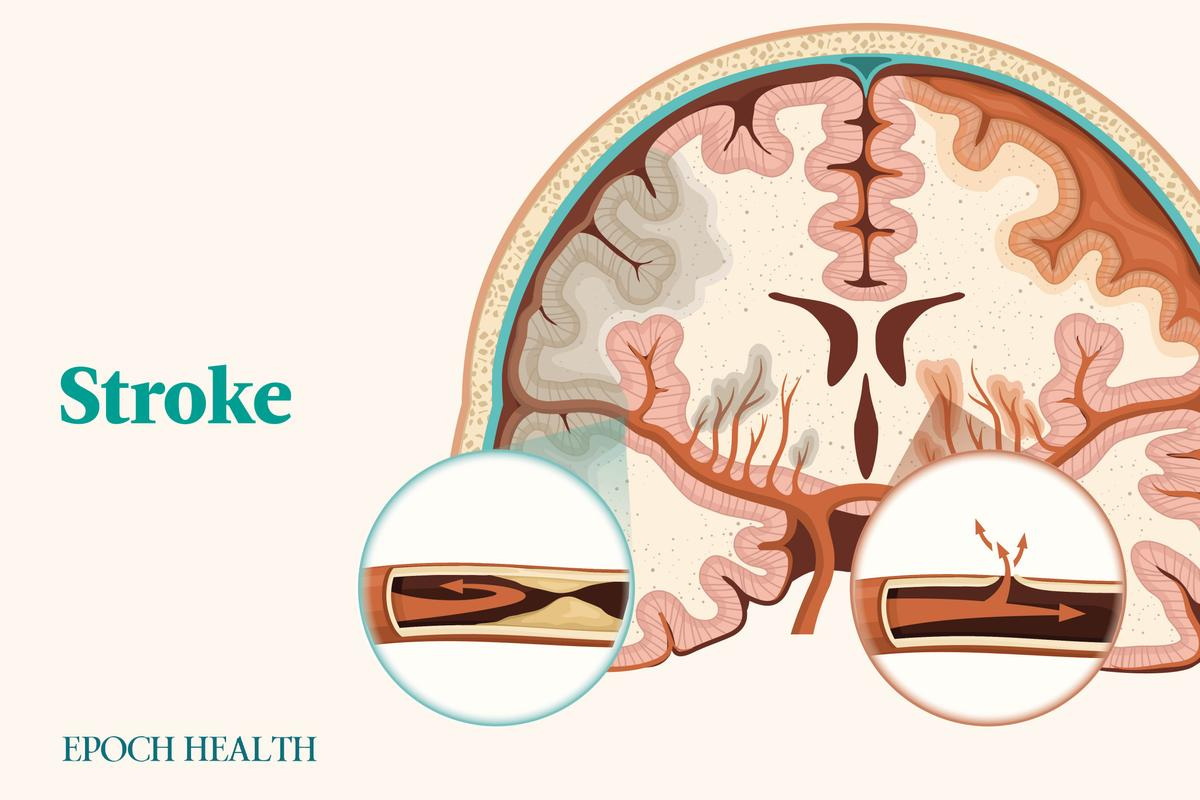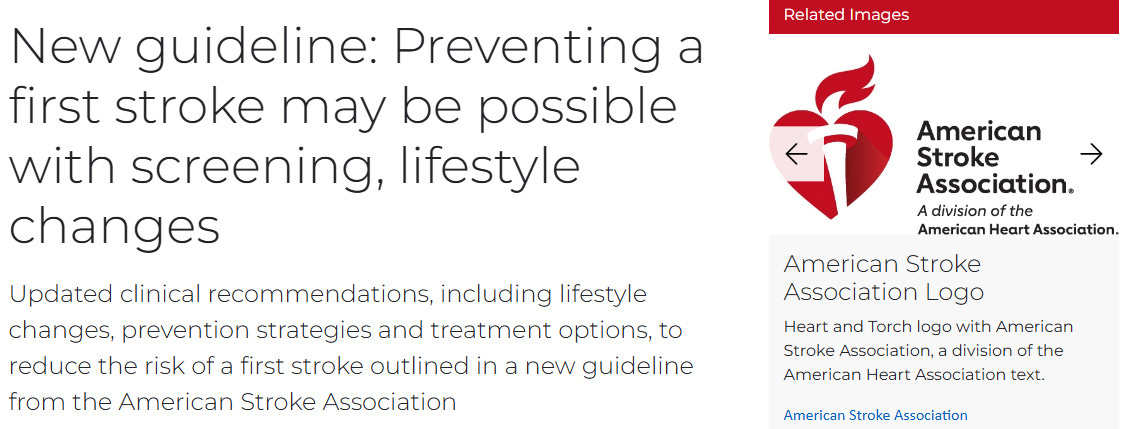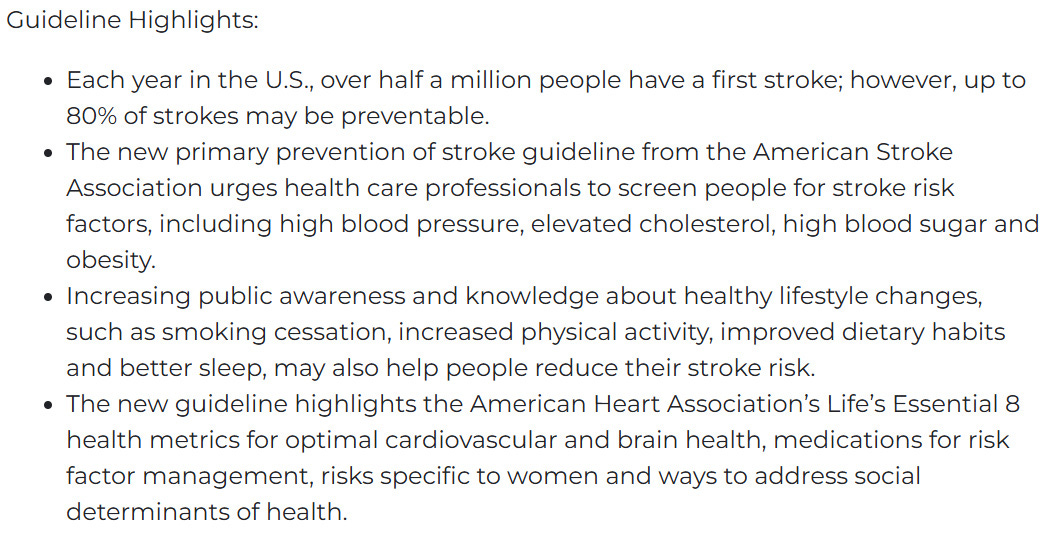New American Stroke Association (ASA) Guidelines: Up to 80 Percent of First Strokes May Be Preventable
With strokes claiming nearly 160,000 lives each year in the United States, the ASA’s new guidelines call for proactive prevention measures for the first time in 10 years.
November 16, 2024
In a major update to its stroke prevention guidelines, the American Stroke Association (ASA) announced Monday that up to 80 percent of the 610,000 first-time strokes that occur every year could be prevented through early screening and lifestyle changes.
With strokes claiming nearly 160,000 lives each year in the United States, the ASA’s new guidelines call for proactive prevention measures.
A stroke occurs when blood flow to the brain is disrupted, causing brain damage and potentially severe disabilities affecting thinking, speech, and mobility.
Health disparities make certain populations more susceptible, underscoring the need for enhanced screening and prevention.
The updated 2024 Guideline for the Primary Prevention of Stroke, the first revision since 2014, emphasizes routine screening for key risk factors, including high blood pressure, elevated cholesterol, high blood sugar, and obesity.
These recommendations aim to help the public adopt lifestyle changes that could significantly reduce stroke risk.
READ MORE:
The Essential Guide to Stroke: Symptoms, Causes, Treatments, and Natural Approaches
Updated Guidelines Stress Primary Prevention
The guidelines are an update from the previous version, presenting new research findings and practical strategies for preventing the first stroke across a person’s lifespan.
The new guidelines also address social determinants of health (SDOH)—nonmedical factors that affect a person’s health outcomes and health care access.
“The most effective way to reduce the occurrence of a stroke and stroke-related death is to prevent the first stroke—referred to as primary prevention,” Dr. Cheryl D. Bushnell, a clinician, researcher, and chair of the ASA guideline writing group, said in a press release.
“Some populations have an elevated risk of stroke, whether it be due to genetics, lifestyle, biological factors and/or social determinants of health, and in some cases, people do not receive appropriate screening to identify their risk,” Bushnell added.
Key Updates and Recommendations
The guidelines reflect medical advances made over the past decade.
One notable addition is the recommendation of glucagon-like peptide (GLP-1) receptor agonists, medications approved by the U.S. Food and Drug Administration (FDA) that reduce heart disease and stroke risk in overweight or obese patients or those with Type 2 diabetes.
“One of the most important advances is the glucagon-like peptide receptor agonists, which are used to lower blood sugar in people with diabetes, have been shown to effectively treat this disorder, but they also lead to significant weight loss in these patients, which has many downstream benefits,” Bushnell told The Epoch Times.
She explained that these combined benefits both reduce the risk of stroke and other complications of diabetes.
“The other drug class is the PCSK9 inhibitors, which are very effective at lowering LDL (bad) cholesterol,” she continued.
“These medications have also been shown to reduce the risk of stroke.”
Key recommendations outlined in the new guideline also include regular health screenings and lifestyle interventions that promote healthy behaviors.
Primary care health professionals are encouraged to educate patients regarding modifiable risk factors, such as high blood pressure, smoking, and high cholesterol, and how they can be managed.
A Focus on Nutrition
Nutrition plays a vital role in the updated guidelines.
The ASA recommends that people adopt a Mediterranean dietary pattern, which is known to reduce stroke risk.
The Mediterranean diet emphasizes whole grains, fruits, vegetables, healthy fats, legumes, nuts, fish, and moderate dairy and alcohol consumption while limiting processed foods.
The new guidelines also affirm the need for physical activity, recommending at least 150 minutes of moderate-intensity aerobic activity each week.
Bushnell added that other new recommendations emphasize not only being physically active but also avoiding sedentary behavior during waking hours.
The guidelines add “a new recommendation for screening for sedentary behavior and counseling patients to avoid being sedentary,” she said.
The update introduces specific recommendations for women, addressing factors such as pregnancy-related high blood pressure and stroke risks associated with oral contraceptives.
These recommendations include lowering blood pressure if it is high in pregnant women, screening for pregnancy complications, and screening for premature ovarian failure (very early menopause before age 40), early-onset menopause (before age 45), and endometriosis (an inflammatory condition caused by endometrial tissue found outside the uterus), Bushnell said.
“The public needs to understand that lifestyle factors [like] diet, physical inactivity, obesity, sleep, smoking, have a significant impact on the risk of stroke, and we hope that providers will talk to their patients about changing these behaviors,” she said.
“Implementing the recommendations in this guideline would make it possible to significantly reduce the risk of people having a first stroke,” Bushnell stated.
“Most strategies that we recommend for preventing stroke will also help reduce the risk of dementia, another serious health condition related to vascular issues in the brain.”
To assist health care providers in assessing patient risk, the guideline introduces the Predicting Risk of Cardiovascular Disease EVENTS (PREVENT) risk calculator, which estimates individual stroke and heart disease risk starting at age 30.
As the ASA continues to advocate for effective preventive measures, it reminds the public to recognize the warning signs of stroke using the acronym F.A.S.T.: face drooping, arm weakness, speech difficulty, and time to call 911.









